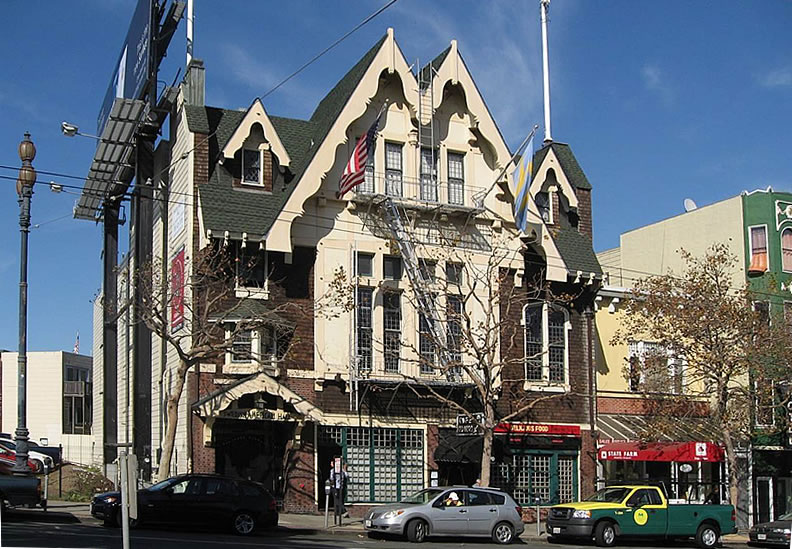Designed by Swedish-born master architect August Nordin and built in 1907, the Swedish American Hall at 2168 Market Street is on its way to becoming an official San Francisco landmark.
From the Planning Department’s Draft Landmark Designation report for the building, the renovation of which is nearing completion and includes a new Basque-inspired restaurant (“Aatxe”) which will occupy the building’s storefront spaces, a revamped event space in the ornamental hall upstairs, and a renovated Café Du Nord below:
Since its construction the building has served as the home of the Swedish Society of San Francisco, founded in 1875, while also providing a meeting place for scores of Swedish and Scandinavian fraternal and social organizations. At the time the building was constructed, it represented the aspirations of pioneering Swedes who began arriving in San Francisco during the Gold Rush, and who continued to come to the city during successive waves of Swedish immigration during the late 19th century.
The building is also emblematic of the development of a larger Scandinavian enclave in the Mission Dolores, Duboce Triangle and Upper Market area at the turn of the 20th century. For decades the Swedish American Hall served as home for businesses serving the Swedish community, including the Cafe Du Nord—opened in 1908—which today counts among San Francisco’s oldest saloons and restaurants operating continuously from the same location.
The building is also architecturally significant as an embodiment of the distinctive characteristics of a type, period, and method of construction, as well as for being an architecturally significant work of master architect, August Nordin. The building’s architectural finishes are unusually fine and demonstrate a superior level of craftsmanship. The building’s exterior employs a rich palate of materials and ornament which conveys an unusually strong street presence commensurate with its use as a public meeting hall.
The interior features a number of lodge rooms that also feature superior detailing and are individualized such that each has its own distinctive identity, while remaining harmonious within the overall composition. The building’s largest public assembly space, Freja Hall, features highly ornamental finishes and soaring truss work that rank it among the finest expressions of the Arts & Crafts style in California.
The Historic Preservation Commission’s meeting to initiate the landmarking of the Hall is scheduled for tomorrow.

Certainly makes more sense to me as something very unique to the City
I have been inside , and some of the room upstairs are pretty cool ,
very happy its going to be preserved
I’m against preserving most things, but this is certainly more interesting than most things people want to preserve.
too bad about the fire escape across the facade…
oh yeah, and the enormous billboard to the west, taller than the building itself… disgusting things.
The billboard will be removed when the construction begins on the Greystar project.
I walk past every morning.
I’m very concerned from what I can see of the current work.
It looks like many of the great 1907 fixtures and finishes are being replaced with Home-Depot-grade junk 🙁
What looked like beautiful artisan tile on the lower facade was just swapped out for what looks like black bathroom tile.
You can see from the picture the lower facade was brick not beautiful artisan tile.
The city gets one right this time. 1 out of 100 aint bad?
The city family likes to landmark things that are surrounded by the unwashed i.e. un-landmark-able. Because just ‘being mean’ is basically all they have left after the money grubbing.
What?
In my youth, I ate there about once a month. Liked it very much.
Would be cool if the building housed more Scandinavian establishments. On the other hand, Basque food is a lot better then Swedish food.
I dunno; Scandinavian food is more than just smoked fish, which also just happens to be delicious.
Lutefisk! Not smoked but, hey, soaked in lye so its gotta be special.
My greatgrandma used to make it. It is worth opening the wiki article linked above to scroll down and read Garrison Keillor’s quotes about this Scandinavian delicacy. Here’s a sample:
“It is the hereditary delicacy of Swedes and Norwegians who serve it around the holidays, in memory of their ancestors, who ate it because they were poor. Most lutefisk is not edible by normal people. It is reminiscent of the afterbirth of a dog or the world’s largest chunk of phlegm.”